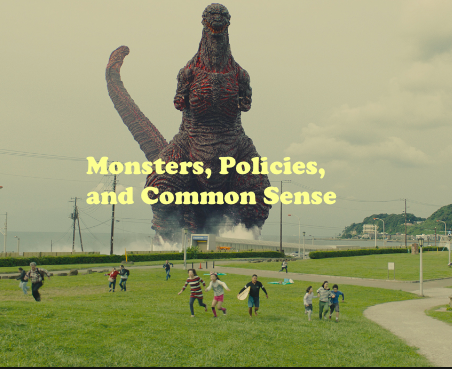
16 Jan Balancing Policy With Common Sense Isn’t Always Easy
Well, Hawaii’s Emergency Management Agency had an interesting weekend.
Thirty eight minutes of panic for our 50th state around a false ballistics missile launch – made more egregious by the fact that:
- Not all citizens were made aware of the perceived threat to begin with – not all phones received the initial message
- There was apparently information at some level that a mistake had been made 3 minutes after the alarm – but policy and/or human error would not allow for a “stand down” to go out – so for more than a half hour those citizens who HAD been notified were left to panic
- A state elected official learned the ballistic warning was in error and tweeted 12 minutes later a message to that effect – a tweet that reached a limited few
- It took some 18 minutes for an email to send a similar “stand down” message but some 38 minutes for a full “error notification” to go out to all from the EMA – by which time many of the citizenry had frantically sought refuge in shelters, sewers, their mom’s basement, or any other place that might save them.
- There was no defined action plan in place for what citizens were to do in the event of a nuclear attack – hence the mad rush to nowhere for a great many.
All this because (apparently) a worker accidentally hit the wrong button during a shift change – and created chaos that rivaled the arrival of Godzilla on Odo Island – a well founded fear given the history of nuclear tension – witness the recent NY Times article that carries us back to the height of the Cold War.
The investigation and the corrective actions that follow the Hawaii debacle will likely reveal much more (there seems to be more info flowing out hourly) – and at least a few of the questions that will demand answers include:
- Is it actually possible for one worker to trigger an action of that magnitude? (Yes – but new systems are being put in place to make certain it will take at least two moving forward)
- How is the state’s EMA tied to the military – is it a stand-alone operation or is there synchrony between the two? (Apparently the latter dismissed the threat immediately)
- Are there immediate corrective measures that can be taken to address the human error factor if and when they occur?
- Is there a defined Plan of Action for citizens in the horrible event this someday is real?
- And maybe most important – Can we learn from this?
Hawaii’s scare reminds us again of the timeless battle to balance policy/systems with human intelligence and plain old-fashioned common sense – and the fact that sometimes we default to the former and forget the latter completely.
For those who have debated that same question a few times before – namely anyone who has endured the seemingly mindless system’s bureaucracy associated with:
- Driver’s license or auto tag renewal
- Working thru your health care reimbursement with your managed care company
- Security and check-in at the airports – and I won’t dare speak to navigating customs
- Customer service at (fill in the blank at darn near any company in the world)
- Your own company’s policy and procedures
- The call to Tech Support that demands the patience of Job
You get the picture – few of us have not been in a recent situation where it would seem our reliance on policy not only trumps common sense – it effectively removes it from the equation.
The Hawaii incident may be a failure of systems – or better yet, a failure of human execution as regards those systems – but it reminds us that we build processes in order to:
- Ensure there is a consistent approach to potentially highly dangerous and/or complex situations
- Allow for the highest safety for those involved
- Streamline efficiencies
- Expedite work flow (for those tempted to laugh here – feel free)
- Eliminate/minimize the lone wolf mentality
As an example – pilots and the rigor they apply to pre-flight checklists. I have friends who’ve flown commercially for 30 years – but they still go thru those steps. Why – because it eliminates the high probability of human error.
There is a great deal of parallel in the corporate world – and in our career journey. Like the government, companies build processes for almost everything – and they serve a vital function. Processes make certain we can collectively learn from the past and apply the lessons moving forward – not simply fly by the seat of our pants.
But processes (whether for your company, the government, or the local PTA) only work when they are constantly examined and balanced against plain old-fashioned common sense – and grant individuals the latitude to exercise that acumen when the situation warrants.
Minus that we build human robots who can’t think for themselves – and fall back on “what the book says” for everything. And yes, that occurs everyday to varying degrees in every company.
What happens when policy takes the place of good judgment? Or when policy and/or systems break down and there is no human fail-safe to correct?
If you’ve ever felt overwhelmed by an overdose of bureaucracy and an under-dose of leadership or individual judgment with your own company I suspect you already have an answer.
Or better yet – see Hawaii this past Saturday morning .


Sorry, the comment form is closed at this time.